News

2025.03.04
Event
Report on the 22nd New Works Presentation Ceremony of the Edogawa Traditional Craft Industry, Academia, and Public Project
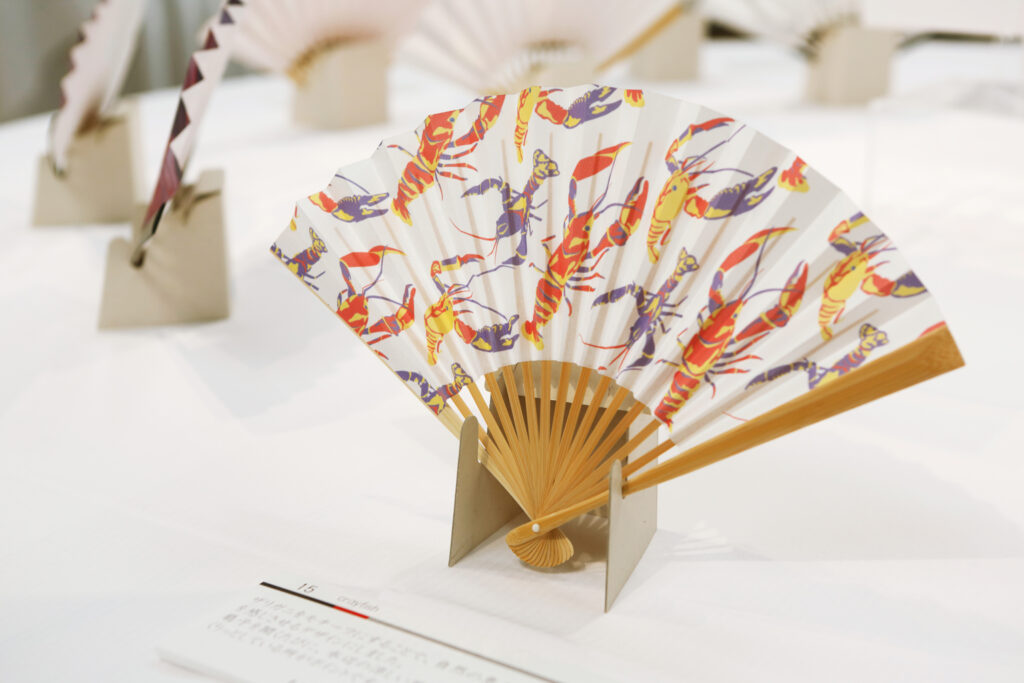
On January 18 and 19, 2025, the 22nd edition of the Edogawa Traditional Craft Industry, Academia, and Public Project presentation was held at Tower Hall Funabori. Collaboration between Edogawa City’s traditional artisans and students from Joshibi University of Art and Design resulted in the display of 37 new pieces, drawing a large crowd. Here we bring you a report featuring voices from craftsmen and students, along with highlights from the awards ceremony.
A New Era of Crafts Forged by Industry, Academia & Public Sector
The Edogawa Traditional Craft Industry, Academia, and Public Project is a long-standing initiative that pairs the skills of Edogawa City’s traditional craftspeople with the creative design talents of Joshibi University students to produce craft works tailored to modern lifestyles.
Initiated in 2003 (Heisei 15), this marks its 22nd year. Visitors, including local residents and those involved in the project, could be seen throughout the venue, clearly looking forward to this annual event.
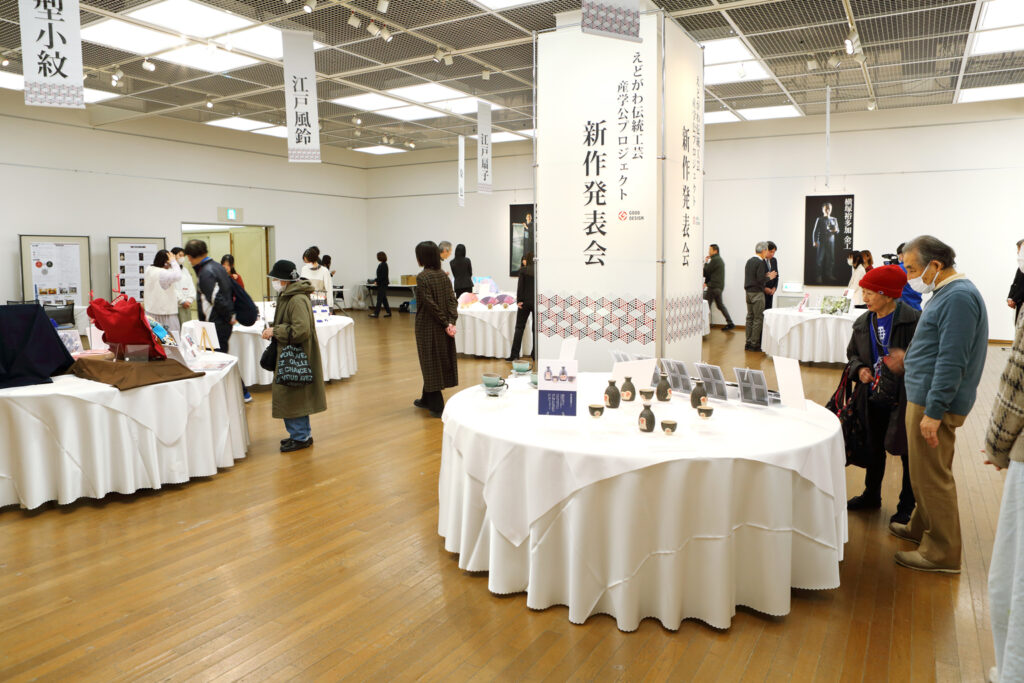
We spoke to three of the participating craftspeople, representing those involved in the project.
Nobuhiro Hayashi, Kouwayaki, President of the Edogawa Traditional Craft Association
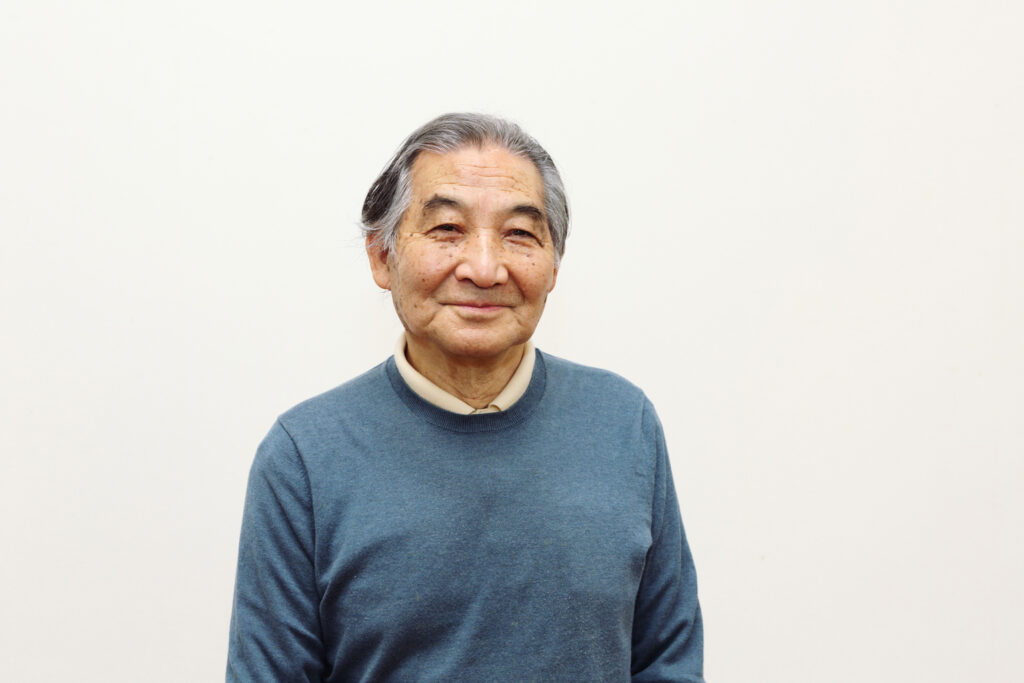
“I keep participating because I have high hopes for the kind of designs that can emerge from the fresh perspective of younger generations. To bring unconventional and innovative ideas to life, I focus on communication with the students. I believe that when the maker genuinely enjoys the process, it leads to better creations. Even when there are technical limitations, I try not to say ‘that can’t be done’—instead, I explain carefully and make sure we discuss things fully so we can create something exciting together.”
Hiroshi Matsui, Edo Sensu, President of the Edogawa Traditional Craft Preservation Society
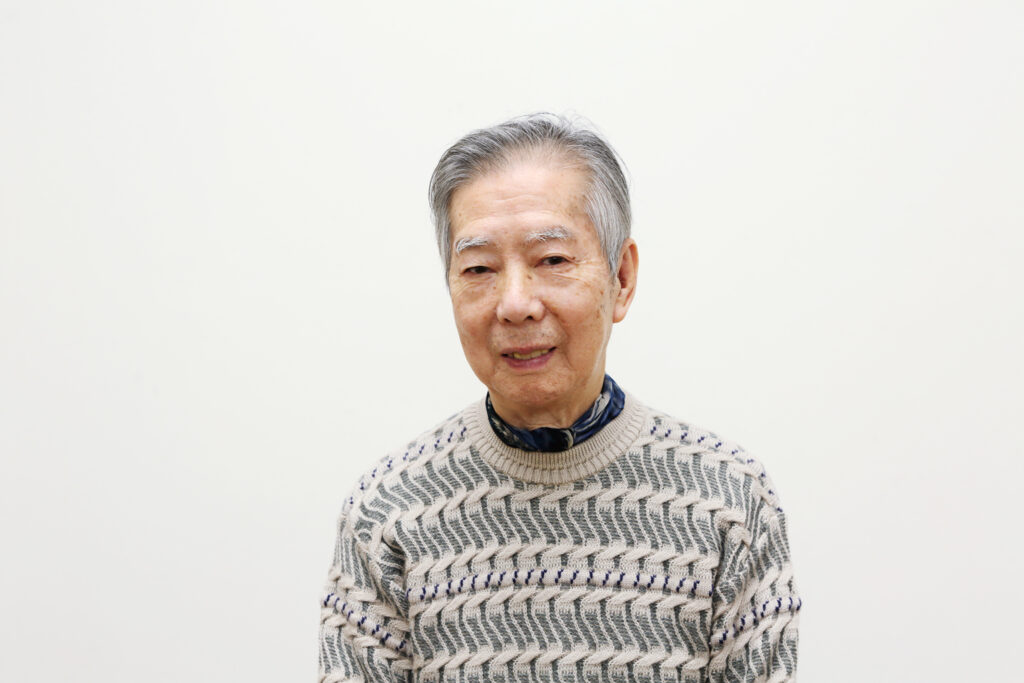
“When I first joined the project 22 years ago, I did so with a sense of urgency, realizing that we couldn’t survive by doing things the same old way. One piece that stands out in my memory is a fan with an asymmetrical design, proposed by a student. It was simple but bold, and it ended up becoming a hit product for over 10 years. While folding fans have a fixed shape, I always try to preserve the students’ ideas as much as possible. I hope these new interpretations become part of the next generation’s tradition.”
Kaori Uemura, Tsumami Zaiku, Edogawa Traditional Craft Association
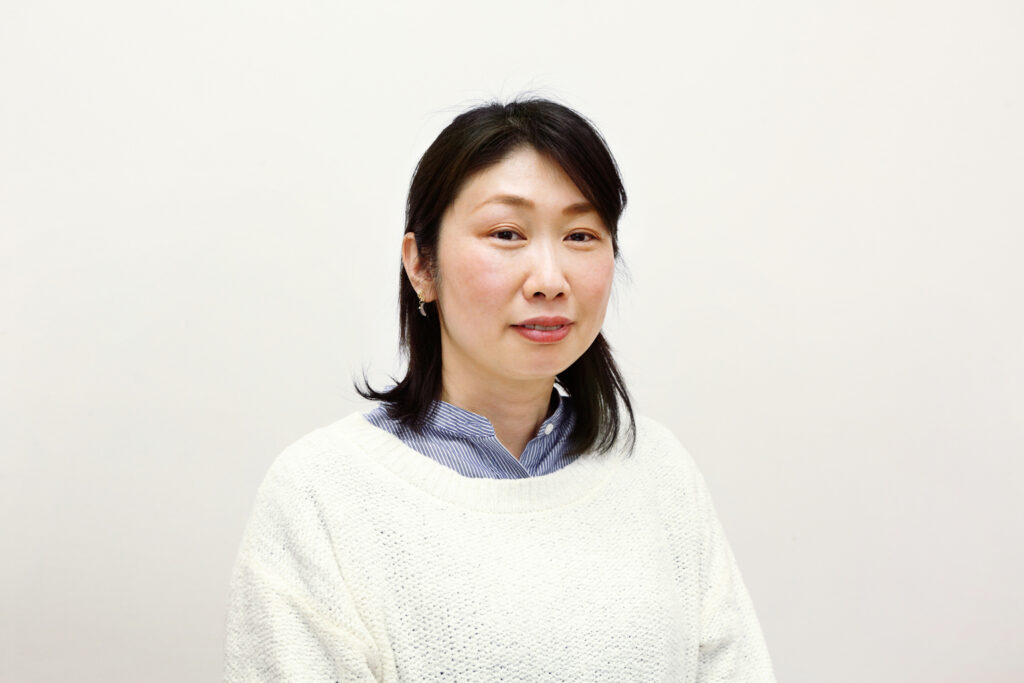
“Not long after joining the association, I was encouraged to take part in the project thanks to the positive reception of my work, which had a different and modern style. I like to make small, charming pieces that make people smile, things that feel approachable. Working with students has brought about bold new ideas, like a cream soda–themed piece. I want to keep pursuing craftsmanship while sharing delicate techniques that you can’t learn from videos online.”
Visitors Reflect Growing Interest in Traditional Craft
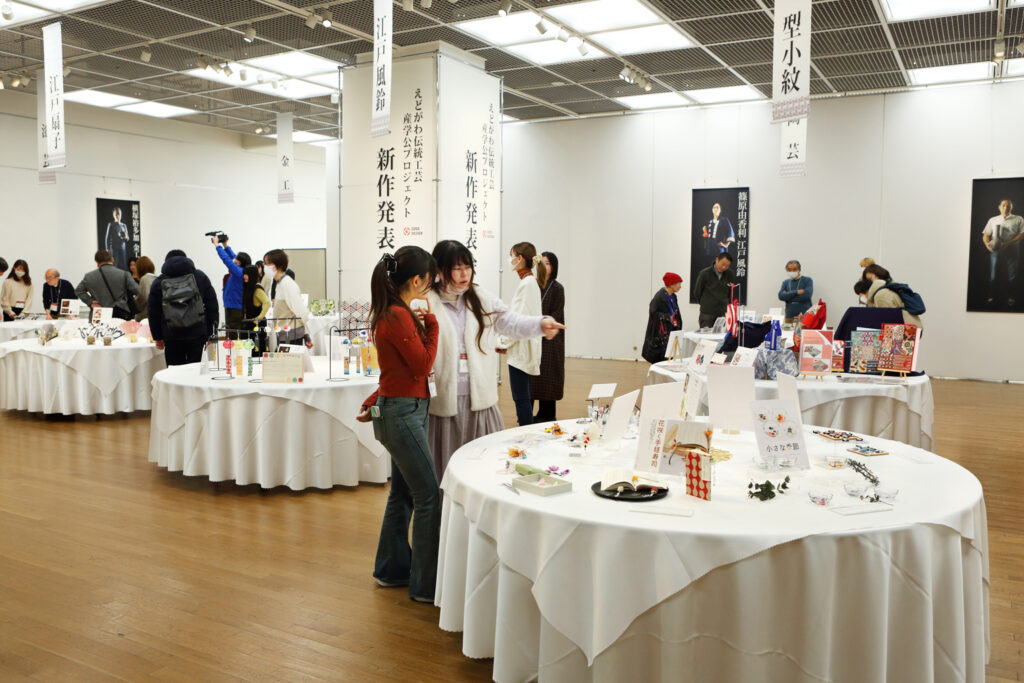
The venue welcomed a large number of visitors with an interest in traditional craft. A woman working in the design industry, who dropped in by chance, shared how impressed she was by the works on display.
“I viewed the pieces with a deep respect for the makers behind them. The Urushi Reel Strap in particular stood out to me—it’s truly beautiful. I hadn’t known about this collaboration with art university students before, but I think it’s hugely motivating for them and a great way to share traditional crafts with a wider audience. It struck me as a very meaningful initiative.”
A local resident of Edogawa City spoke about her own evolving connection to craft in daily life.
“Until recently, I only dabbled in handmade crafts as a hobby, but seeing the outstanding work by these craftspeople has inspired me to start making things like bags. It’s exciting to have opportunities to connect with makers who are creating work that could resonate even on a global stage.”
A man whose relative once took part in the project also offered his perspective on its value.
“The designs are intriguing, and the students’ ideas are fantastic. I’m sure the collaboration brings new discoveries for the craftspeople too, and for the students it’s a valuable chance to engage with traditional craft. I think it’s a wonderful event.”
Creative Spirit on Display at the Closing Ceremony
At 5:00 p.m. on the 19th, participants and stakeholders gathered for the closing ceremony. Noguchi Chikako, director of the Industry and Economy Department of Edogawa City and leader of the Edogawa Traditional Craft Industry, Academia, and Public Project, offered the following reflections on this year’s outcomes.
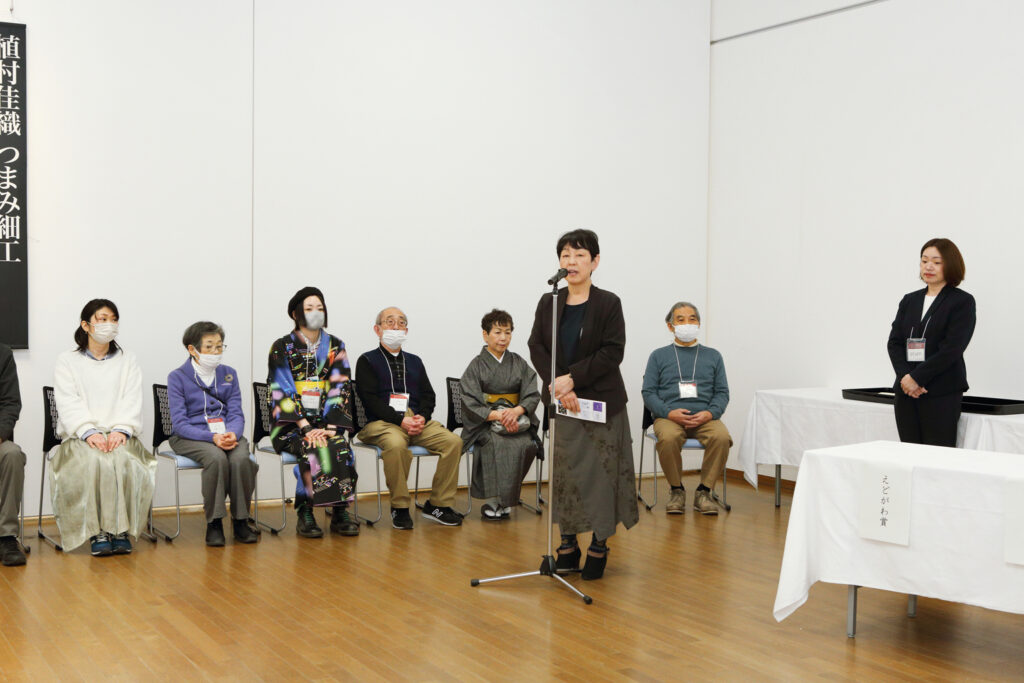
“Since the launch event in May, students have worked over roughly eight months—about five of those dedicated to production—developing ideas and collaborating with craftspeople. Every one of the resulting pieces fused time-honored techniques and high-level craftsmanship with fresh ideas and vibrant colors. The results were truly exceptional.”
Among the 37 works exhibited, two were selected by faculty for the Faculty Award (Excellence Award), and one was chosen by public vote as the Edogawa Award (Grand Prize).
Faculty Award, Title: Chiisana kisetsu (Tiny Seasons), Tsumami Zaiku, crafted by Uemura Kaori, designed by Osakada Mutsuki
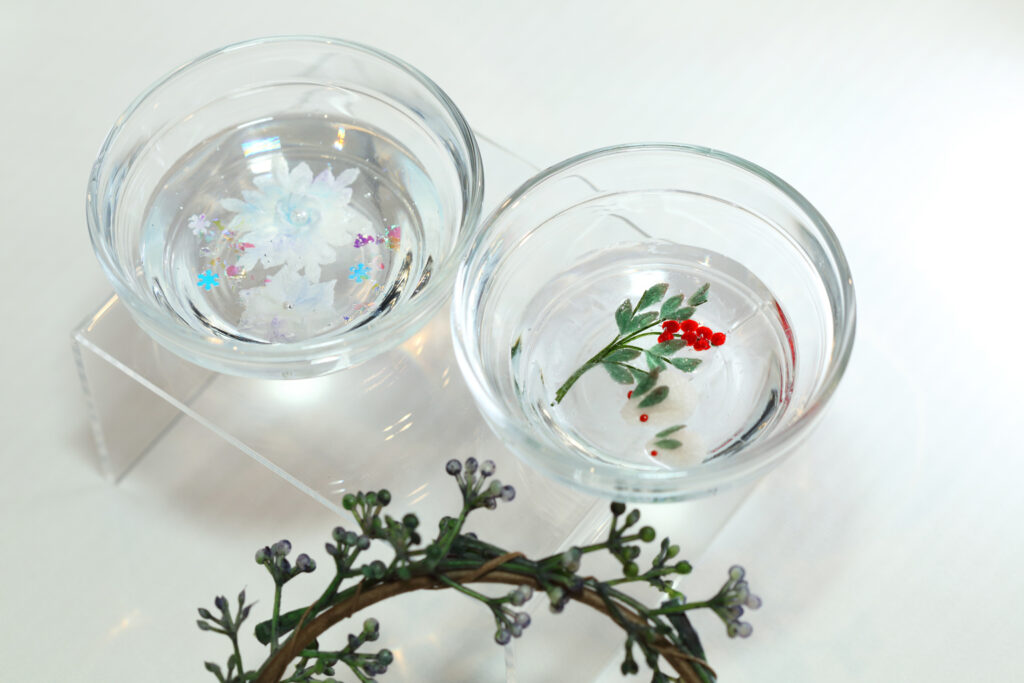
This accessory tray captures the delicate beauty of tsumami zaiku in a more everyday, accessible form by combining it with resin. Each piece encloses a different season in a tiny glass-like world to create an ornament that lifts the heart the moment it catches the eye.
Recipient: Joshibi University of Art and Design, Osakada Mutsuki
“When I first saw tsumami zaiku, I was struck by its delicacy. It’s often used for hair ornaments, but I wanted to find a way to make it something people could enjoy more casually. I designed a small world that captures the changing seasons and shaped it into an accessory tray that could be used every day.”
Recipient: Artisan, Uemura Kaori
“Osakata’s idea of bringing tsumami zaiku into everyday life felt so fresh. By combining it with a modern material like resin, the pieces catch the light beautifully. Using seasonal themes also adds to their collectability—I wanted that to come through in the final design.”
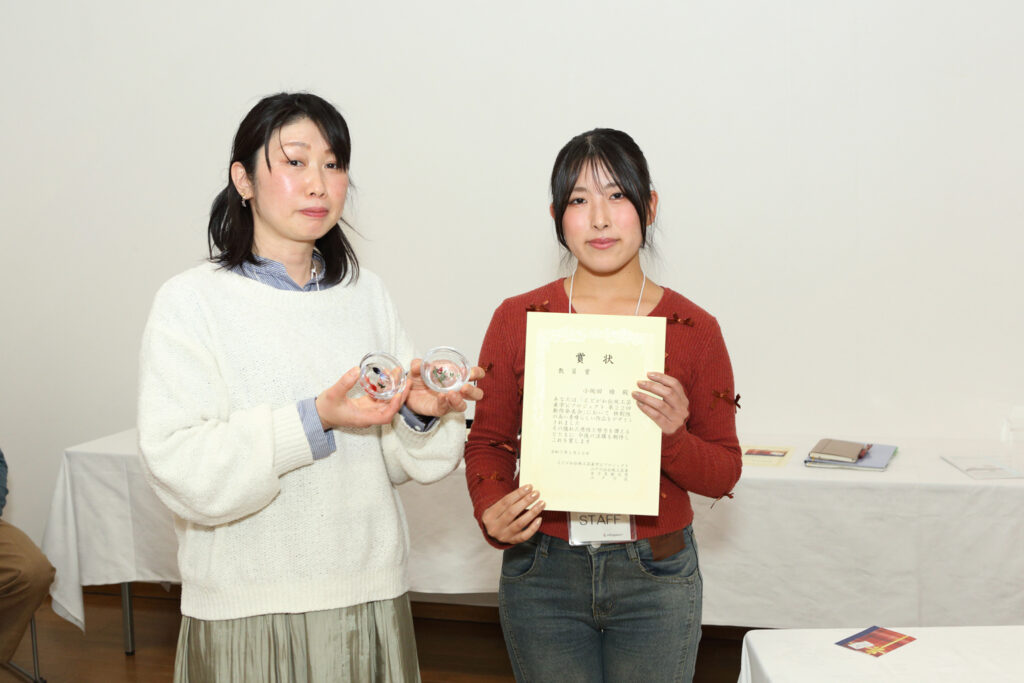
Professor Kosuke Goto, Director, Joshibi University of Art and Design
“This piece features characteristically delicate forms, and the use of resin enhances the vivid colors of the tsumami zaiku. We appreciated this innovative pairing of resin and tsumami work, and selected it for that reason.”
Faculty Award, Title: A… (Ah…), Edo furin (wind chimes), crafted by Shinohara Yukari, designed by Nakano Yuka
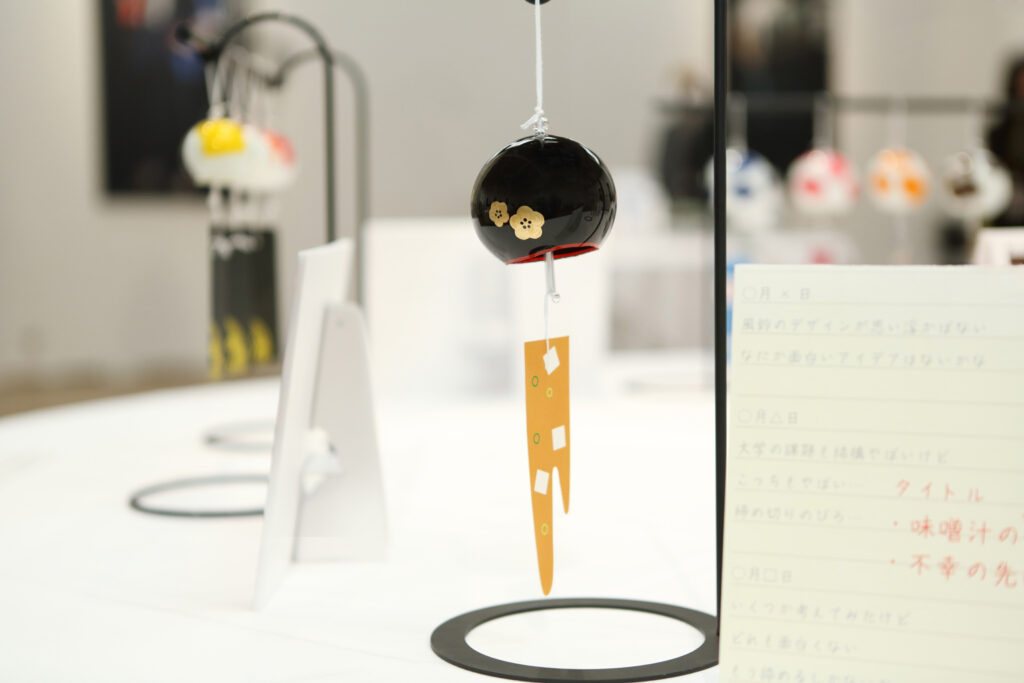
The grief of spilling a bowl of miso soup just as you’re about to enjoy it… This wind chime is a step ahead to help make sure that never happens. Designed with a playful touch to bring a little bit of happiness your way.
Recipient: Joshibi University of Art and Design, Nakano Yuka
“Artisan Shinohara gave me the theme of ‘designing a tilted wind chime.’ I wanted to bring a playful, unexpected element into the world of traditional craft. Everyone has probably spilled miso soup at some point, so I chose that tiny mishap as my motif.”
Recipient: Artisan, Shinohara Yukari
“I really resonated with Nakano’s concept of ‘if misfortune has already come to pass, then happiness is all that’s left.’ The design may be minimal, but we made sure the moment of miso soup spilling is clearly conveyed, for example by adding tofu and green onions to the paper strip.”
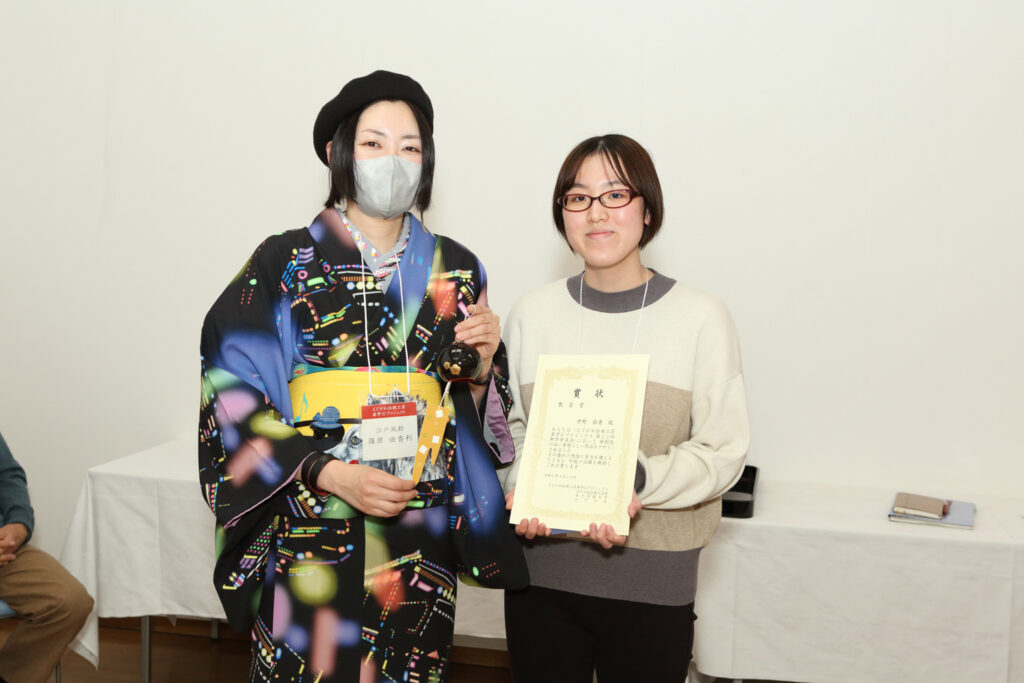
Associate Professor Sizu Ara, Joshibi University of Art and Design:
“At first glance, it looks like a simple black wind chime with a pattern. But when you look at the paper strip, you have that ‘Ah…’ moment. The designer’s perspective comes through clearly, and it’s a piece that many people can relate to.”
Edogawa Prize, Title: Kirabi (Radiant Beauty), Chusen Dyeing, crafted by Kusanagi Keiko, designed by Yamaguchi Mana
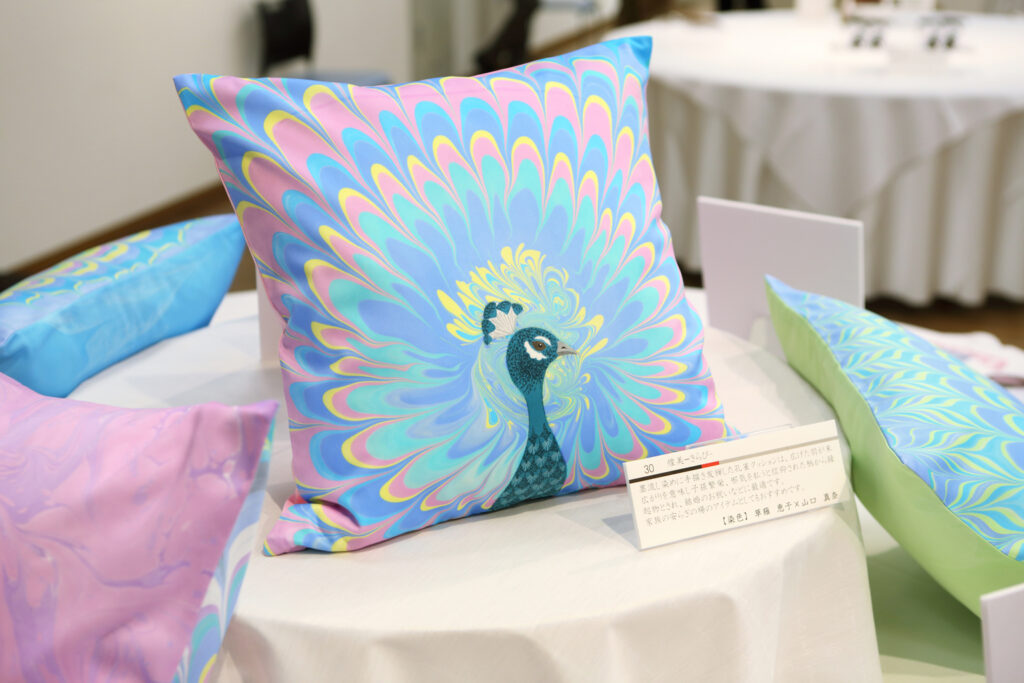
A peacock motif cushion made using a combination of suminagashi dyeing and hand-painted yuzen techniques. The outspread feathers symbolize good fortune and prosperity, and the peacock has long been considered a lucky motif believed to ward off evil. This piece makes a perfect gift for weddings and other celebratory occasions.
Recipient: Joshibi University of Art and Design, Yamaguchi Mana
“I was drawn to the vibrant color expressions in dyeing. I chose the peacock motif not only for its rich colors but also because its outspread feathers represent good luck. I wanted to create a piece that could be used to celebrate life’s special moments, and especially weddings.”
Recipient: Artisan, Kusanagi Keiko
“To bring Yamaguchi’s vision to life, we took on the new challenge of combining yuzen and suminagashi techniques. Expressing the peacock’s feathers took many rounds of trial and error, but I think that blending both methods allowed us to achieve a much richer result.”
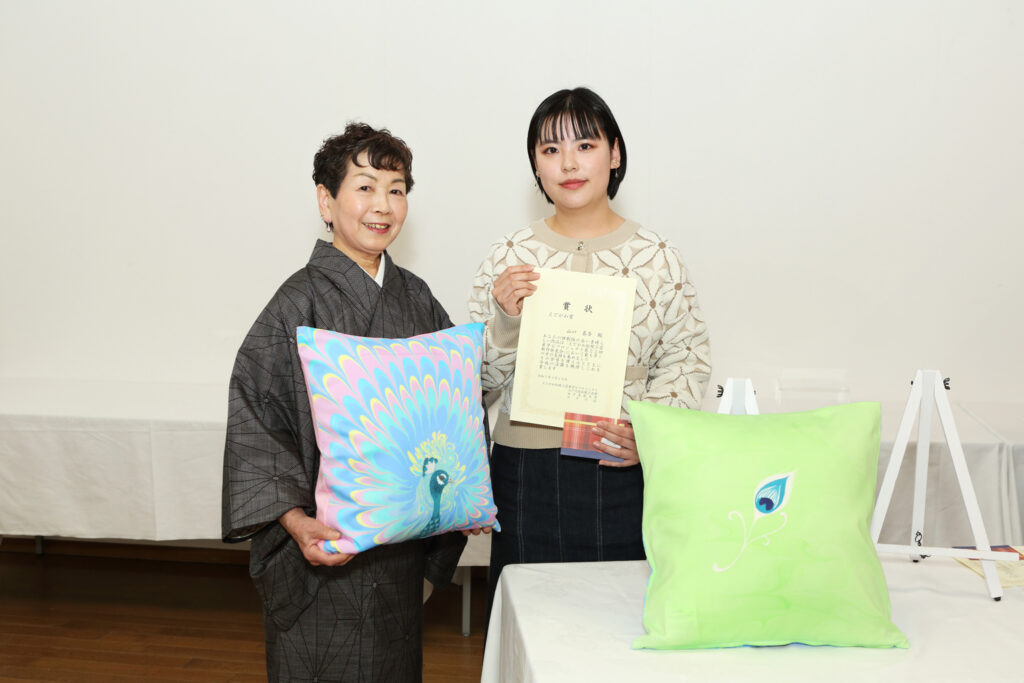
Noguchi Chikako, Director of the Industry and Economy Department, Edogawa City
“This is a well-thought-out piece centered around its vivid use of color. Many visitors commented through the survey that ‘the vibrant colors are beautiful’ and ‘it feels like it brings happiness.’ It’s the kind of piece that makes you believe your home will be filled with joy just by having it there.”
Young Talent Envisioning the Future of Traditional Craft
Through their collaboration with craftspeople, the student participants discovered fresh possibilities in traditional craft. We spoke with the three award winners about their experience.
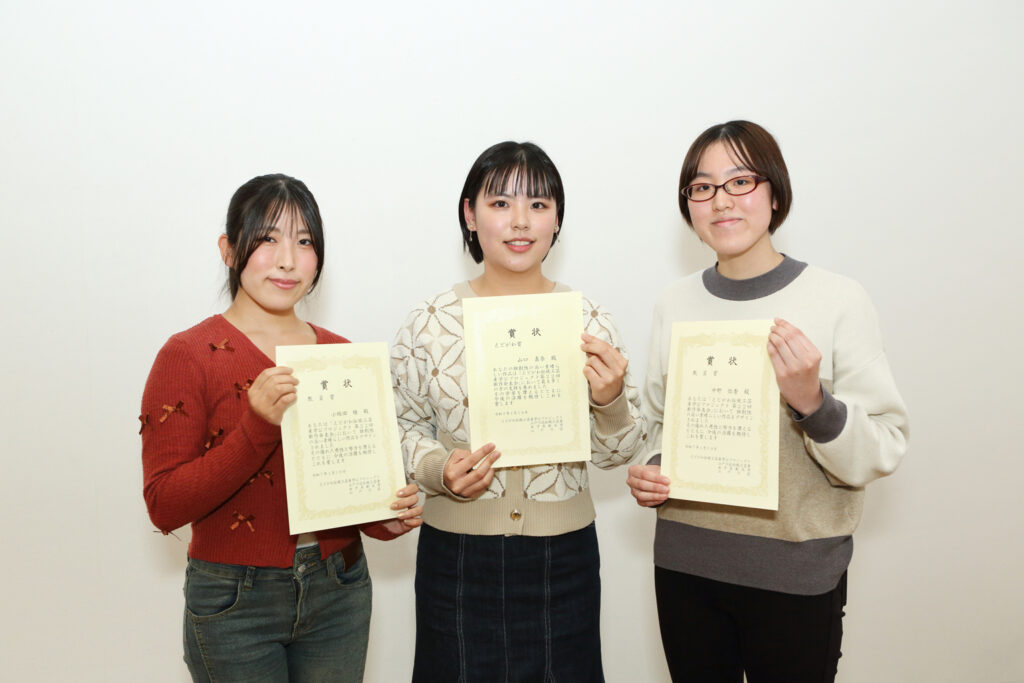
(From left) Faculty Award winner Osakada Mutsuki, Edogawa Prize winner Yamaguchi Mana, and Faculty Award winner Nakano Yuka.
Edogawa Prize: Yamaguchi Mana
“When I heard that I would be able to collaborate with someone working professionally in the field, I knew I wanted to take part in this project. Working with Kusanagi taught me so much about combining techniques and expressing color in ways I’d never learned in the classroom. Being exposed to the skills and experience of a craftsperson made me realize just how deep and compelling traditional craft really is—even today.”
Faculty Award: Osakada Mutsuki
“Working with Uemura taught me the meaning behind each step of the process and the qualities of different materials. Traditional techniques are the result of centuries of refinement, and it’s precisely because of that that they can harmonize beautifully with new ideas. This experience really expanded my perspective as an aspiring designer.”
Faculty Award: Nakano Yuka
“Through my conversations with Shinohara, I came to see that traditional craft isn’t something old-fashioned at all. On the contrary, it has an expressive power that can really resonate with how we see the world today. What’s important is to respect the traditional techniques while also giving them a new interpretation that fits the present. I believe that’s how traditional crafts can become a familiar part of our lives.”
With 22 years of history behind it, the Edogawa Traditional Craft Industry, Academia, and Public Project continues to foster new value in traditional craft through dialogue and collaboration that bridges generations and professions. In this space where established techniques meet young creativity, the future of traditional craft continues to unfold.
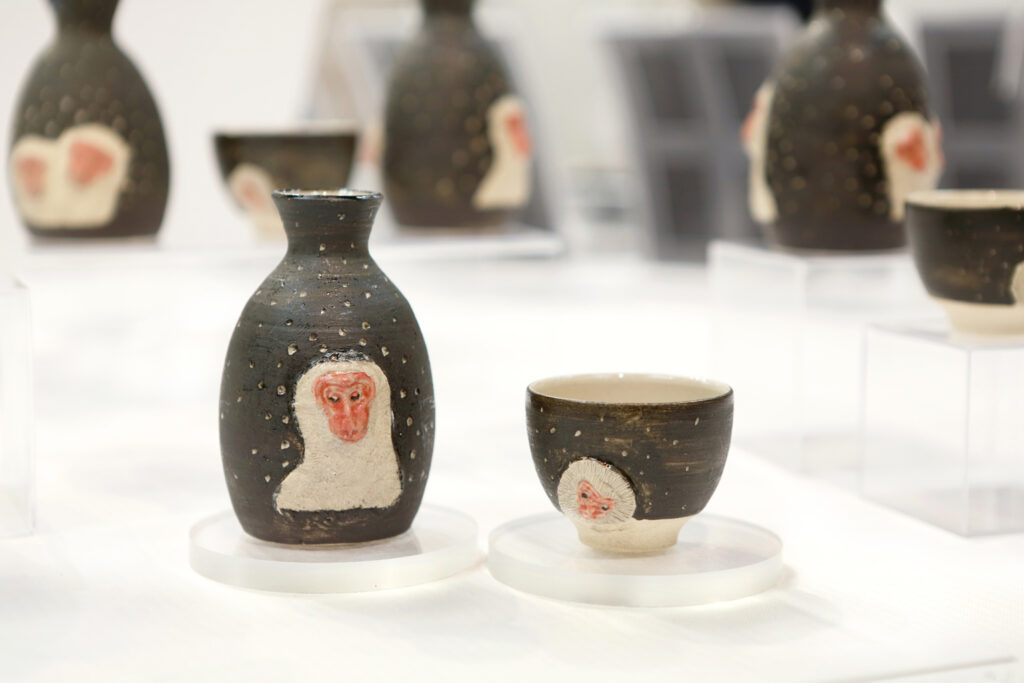
◆Project Overview
22nd New Works Presentation Ceremony of the Edogawa Traditional Craft Industry, Academia, and Public Project
January 18–19, 2025 (10:00–17:00) Tower Hall Funabori, 1st Floor, Exhibition Hall 1
https://www.city.edogawa.tokyo.jp/e032/shigotosangyo/project/event/22shinsaku/22happyoukai.html
Some items from the Industry, Academia, and Public Project are available through the Edogawa Collection online shop.
https://en.edocolle.jp/onlineshop/
